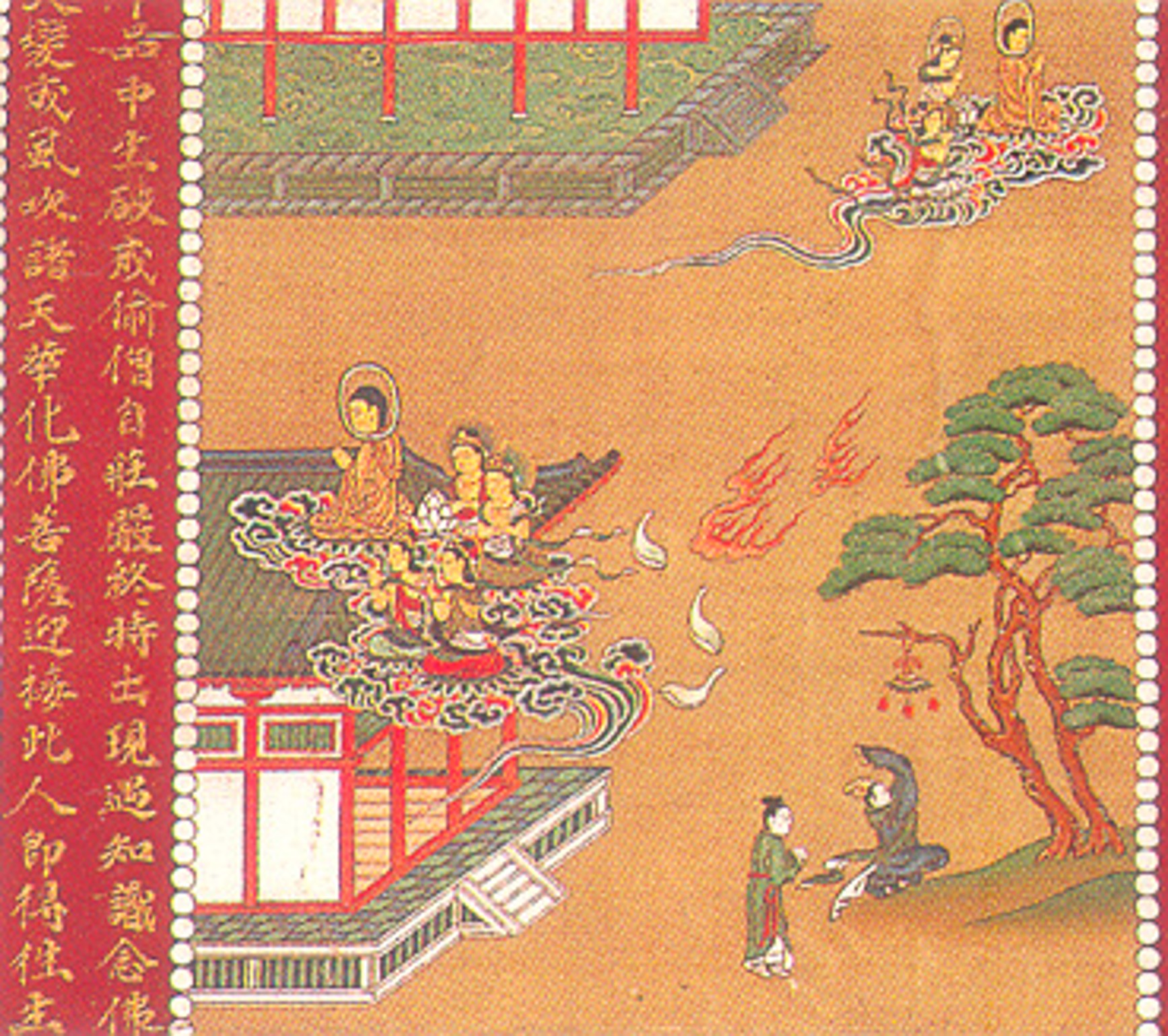08 - Pure Land
1/26
Earn XP
Name | Mastery | Learn | Test | Matching | Spaced |
|---|
No study sessions yet.
27 Terms
Chan Buddhism
A soteriological model in East Asian Buddhism focused on experiencing "Enlightenment" through one's own effort (zili 自力).
Pure Land Buddhism
A soteriological model in East Asian Buddhism emphasizing rebirth in a Pure Land and salvation through 'other's effort' (tali 他力).
Pure Land
Sanskrit term buddha-kṣetra, referring to a realm established by a Buddha or Bodhisattva for the purpose of attaining Nirvana.
Mahayana
A major branch of Buddhism that recognizes many Buddhas and Pure Lands.
Abhirati
A Pure Land associated with Akṣobhya Buddha.
Tuṣita Heaven
A Pure Land where Maitreya Bodhisattva awaits to become the next Buddha.
Sukhāvatī
The most popular Pure Land presided over by Amitābha Buddha, especially among Chinese and Japanese Buddhists.
Amitābha Sūtra
A key text of the Pure Land Sect, also known as the Shorter Sukhāvatī-vyūha Sūtra.
Longer Sukhāvatī-vyūha Sūtra
A significant text of the Pure Land Sect that includes Amitābha's vows.
Amitāyurdhyāna Sūtra
A text known as the "Sutra of Contemplating the Buddha of Endless Life," important in Pure Land practice.
Huiyuan (334-416 AD)
A key figure in Pure Land Buddhism who founded the White Lotus Society in 402 CE.
Tánluán (trad. 476-542 AD c. 488-554 AD)
An early Pure Land teacher known for his systematic work on Pure Land practices and the concept of "Five gates of Buddha-remembrance."
Five Gates of Rememberance
Prostrations, Vocal Praise, Resolve to be born in Pure Land, Visualization, Returning one’s merit
Daochuo (562-645 AD)
A Pure Land teacher who introduced the idea of the "Latter days of the Dharma" (mofa 末法) into Pure Land thought.
Three Ages of Decline of the Dharma
1-500 year: “Age of True Dharma”
500-1000 year: “Age of Semblance Dharma”
1000-11,000 year: “Age of the latter days of the Dharma”
Shandao (613-681 AD)
A disciple of Daochuo who emphasized vocal recitation of Amitābha’s name as the direct path to enlightenment.
nianfo (jp. nembutsu)
A practice meaning "Remember the Buddha," primarily involving the recitation of Amitābha's name.
Taima Mandala
An 8th-century illustration of the Amitāyurdhyāna Sūtra, encoding Chinese geography and architecture.
Wangsheng Lun Zhu
Notes on the treaties on Birth [in the Pure Land]
White Lotus
New souls coming into Pure Land in/on what?
What is the ranking system in the Pure Land?
1 = Highest; 9 = lowest. The highest ranks sit in front of Amitabha.
anusmrti
remember/ hold in mind/ contemplate/ recite
Who and when oversees the construction of Mahavairocana Buddha in the Longmen Caves?
Shandao, 672-675
Amitabha’s Vow #1 (Summarized)
He will attain Enlightenment if the sentinel beings in the land of the ten quarters sincerely and joyfully entrust themselves to him. Call his name if only 10 times. And have the desire to be born in his land.
Amitabha’s Vow #2 (Summarized)
If all sentinel beings in the ten quarters awaken their desire for Enlightenment, do good deeds for merits and sincerely desire to be born in his land, then he will attain Enlightenment.

Describe the image
Guy praying to a tree spirit and the Buddha arrives to take him to the Pure Land
How are ranks given in the Pure Land?
By looking at one’s karma. Good = high rank; Bad = low rank.